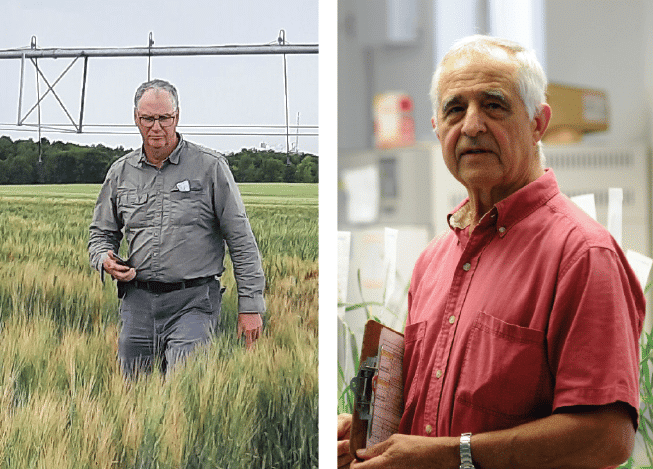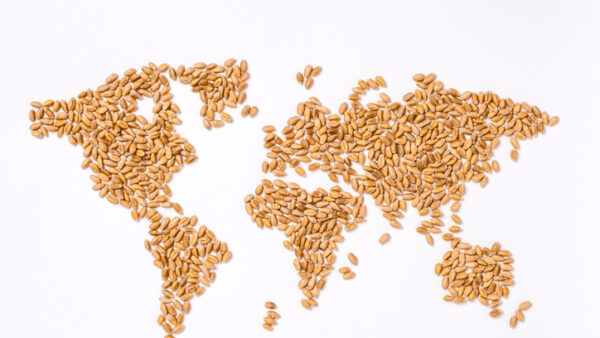Everyone thought it would go extinct after 2018 market class changes, but the Seed of the Year winner for 2023 continues to enjoy a devoted fan base.
By all accounts, AC Foremost should have gone the way of the dodo by now.
In August of 2018, this spring wheat variety was reclassified to be eligible for grades of the Canada Northern Hard Red (CNHR) wheat market class. This was no fault of AC Foremost; the goal posts for gluten strength required by some key international markets had simply changed.
Most varieties subject to reclassification to a lower value market class have imploded, says Jim Downey, R&D manager for SeCan. Many thought the reclassification to a lower value market class would be the death knell for AC Foremost.
The variety didn’t just survive — AC Foremost is going through a fourth wave of resurgence with more than 1,000 acres of pedigreed seed produced in 2021. It’s been on the market nearly 30 years and is now the recipient of the 2023 Seed of the Year Award, part of the Canadian Plant Breeding Innovation (CPBI) Awards.
The award recognizes breeders for their research accomplishments in developing a new variety of field crops, forages, fruits, vegetables and herbs.
“It really became a winner, one of those varieties that was in the right place at the right time and really caught on,” says Ron DePauw, science adviser for SeCan. DePauw was one of nine plant breeders credited with having a hand in creating AC Foremost back in the 1990s.
Upon its commercial release in 1995, AC Foremost rapidly found a very strong following of growers in the high productivity area of west central Alberta. AC Foremost had strong straw of semi-dwarf stature. Subsequently, about 30 CPS varieties have been released and tried by producers. Only AAC Penhold has the straw strength comparable to AC Foremost.
The very strong straw of AC Foremost reduces lodging, thereby saving harvesting costs compared to a toppled-over crop in which swathing operations and/or combining might be done in one direction, or special pick-up fingers needed, leading to more biomass being ground through the combine.
Also, the extra biomass from weak-strawed varieties incurs additional field operations to prepare a seedbed for planting the following spring.
“The very widespread and continued farmer adoption of AC Foremost is proven by the fact it has returned more royalties to the breeding institution than any other CPS-Red variety marketed by SeCan,” Downey adds.

AC Foremost resulted from a unique Pan-Prairie collaboration among pathologists and breeders from three breeding centres of AAFC. Two breeding streams were used — in the first stream, E. Czarnecki, J.J. Nielsen, and A.B. Campbell (AAFC Winnipeg) are credited with backcrossing resistance to loose smut.
In the second stream, Julian Thomas, K.J. Degenhardt, and R. Morrisson (AAFC Lethbridge) backcrossed the major gene Bt10, which confers resistance to common bunt from BW553, developed by H. McKenzie, into HY320.
DePauw and fellow AAFC researcher Ron Knox (who happens to be the 2023 CPBI Plant Breeding & Genetics Award winner) demonstrated that HY320 comprised a mixture of hard kernels and soft kernels. Streams one and two were intermated, and selected for hard kernels, bunt resistance and loose smut resistance (Ken Preston from the Canadian Grain Commission Grain Research Lab was involved in the classification of the breeder lines for kernel hardness that became Biggar red spring wheat).
In 1989, F7 seed was grown in unreplicated plots near Lethbridge, Swift Current, and Portage la Prairie to assess agronomic adaptation. This led to the selection of the line HY392, which was supported for registration in February of 1994. The rest, as they say, is history.
“Introducing a variety into the marketplace has lots of challenges. Timing often is an important part; there’s probably lots of good varieties that have been overlooked just because of when they’re introduced,” Knox says.
“Sometimes the timing is a bit off — nobody has a crystal ball — and a really solid variety gets passed by because growers don’t see the value at that exact moment. But a year or two later, that variety could have caught on if it would have been introduced then. AC Foremost was one of those varieties that was in the right place at the right time and just happened to hit the mark.”
AC Foremost’s legacy hasn’t even yet been fully established; its genetics remain strong and it’s still being used to create groundbreaking new wheat products, SeCan notes.
The loose smut resistance and bunt resistance of AC Foremost continues to be effective to all prevalent races, except race T9 of loose smut. According to a 2022 Canadian Grain Commission summary of CNHR insured commercial acres, AC Foremost comprises 74 per cent of the CNHR acres in Alberta and 24 per cent of all CNHR acres on the Prairies.
The CPSR breeding program at AAFC Winnipeg used the hard kernel Biggar lines and intermated streams 1 and 2, which they designated BiggarBSR (meaning Biggar with bunt and smut resistance). Out of this program flowed Enchant, Conquer, AAC Foray, and AAC Tenacious.
The University of Saskatchewan Crop Development Centre has made use of AC Foremost and other parents whose ancestors trace to BiggarBSR. Syngenta used AC Foremost to produce its spring wheat variety 5700PR, which has become a go-to variety for CPSR growers.












